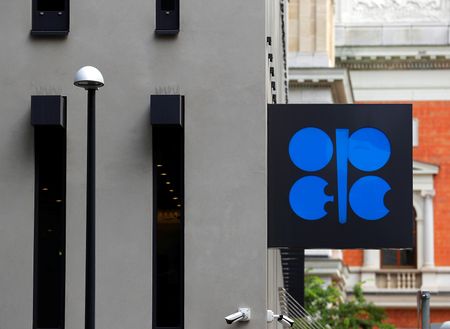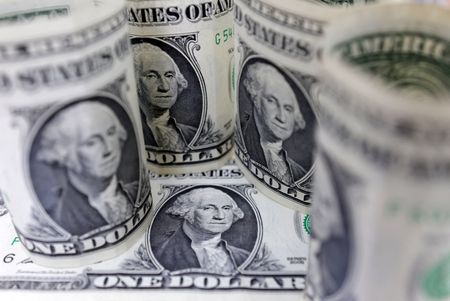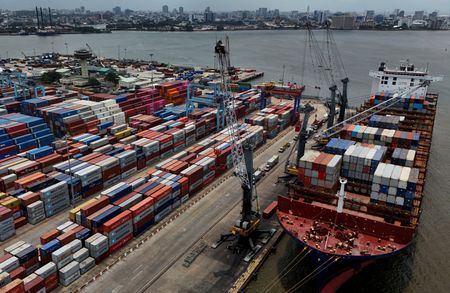By Ahmad Ghaddar
LONDON (Reuters) – Oil prices rose on Tuesday as markets weighed a potential disruption of supplies from Russia due to Ukrainian drone attacks on its ports and refineries as well as the prospect of a U.S. central bank interest rate cut.
Brent crude futures were up 67 cents, or 1%, to $68.11 a barrel at 1318 GMT, while U.S. West Texas Intermediate crude was at $64.12, up 82 cents, or 1.3%. On Monday, Brent settled up 45 cents at $67.44, while WTI settled 61 cents higher at $63.30.
Russia’s oil pipeline monopoly Transneft has warned producers they may have to cut output following Ukraine’s drone attacks on critical export ports and refineries, three industry sources said on Tuesday.
Ukraine has intensified attacks on Russia’s energy infrastructure in an attempt to impair Moscow’s war capabilities, as talks to end their conflict have stalled.
“An attack on an export terminal like Primorsk is aimed more at limiting Russia’s ability to sell its oil abroad, affecting export markets,” said JP Morgan analysts.
“More importantly, the attack suggests a growing willingness to disrupt international oil markets, which has the potential to add upside pressure on oil prices,” they said.
Goldman Sachs estimates that the Ukrainian attacks have taken out about 300,000 barrels per day of Russian refining capacity in August and so far this month.
“While the uncertainty around secondary tariffs and additional sanctions remains high, we assume only modestly lower Russian production as Asian buyers continue to signal willingness to import Russian crude,” the bank said.
U.S. Treasury Secretary Scott Bessent on Monday said the government would not impose additional tariffs on Chinese goods to encourage China to halt purchases of Russian oil unless European countries hit China and India, the biggest buyers of Russian crude, with duties of their own.
Also on investors’ radar is the U.S. Federal Reserve’s September 16-17 meeting, at which the bank is widely expected to cut interest rates.
While lower borrowing costs typically boost fuel demand, analysts were cautious on the health of the overall U.S. economy.
Markets were also factoring in the likelihood of crude inventory declines in the U.S. last week, with official data expected on Wednesday at 1430 GMT.
A Reuters poll on Monday showed analysts expected U.S. crude oil and gasoline stockpiles to have fallen last week, while distillate inventories likely rose. [EIA/S]
(Additional reporting by Anjana Anil in Bengaluru and Trixie Yap in Singapore. Editing by Joe Bavier and Mark Potter)











